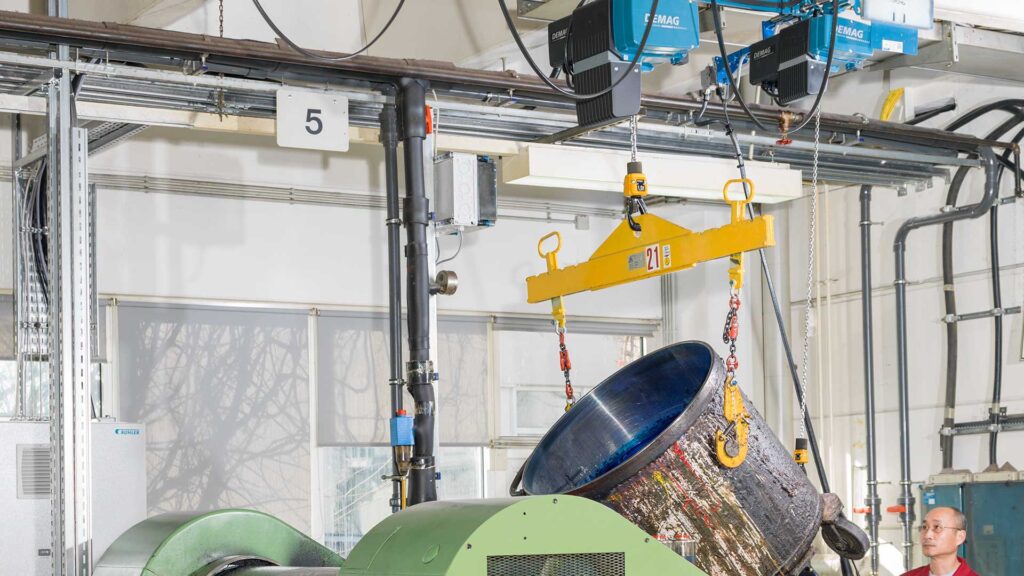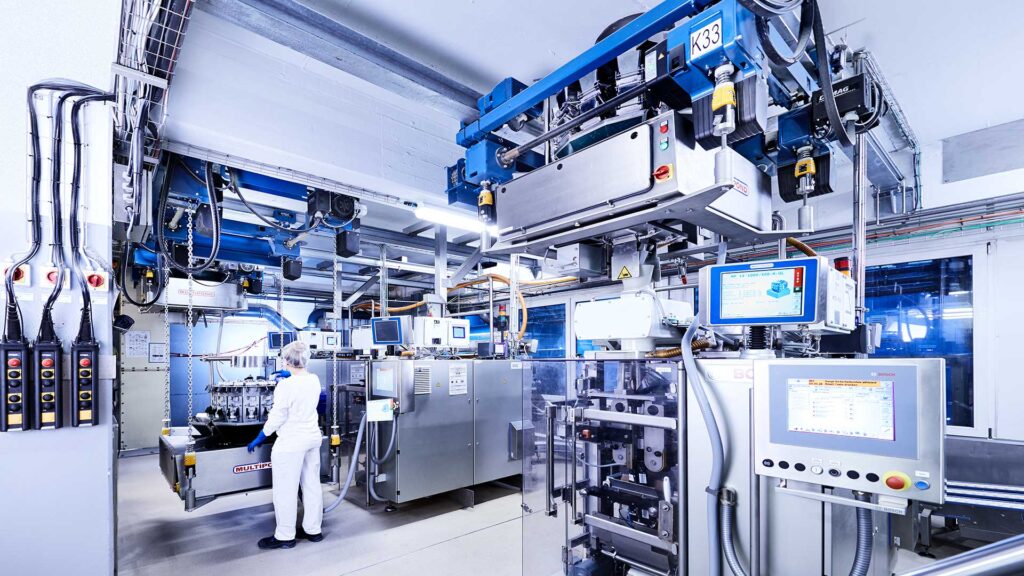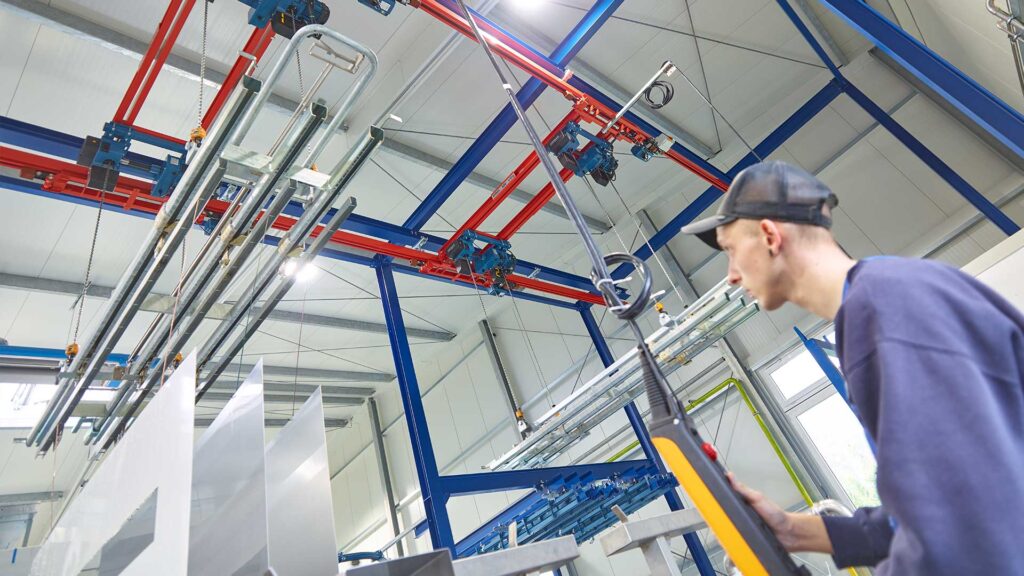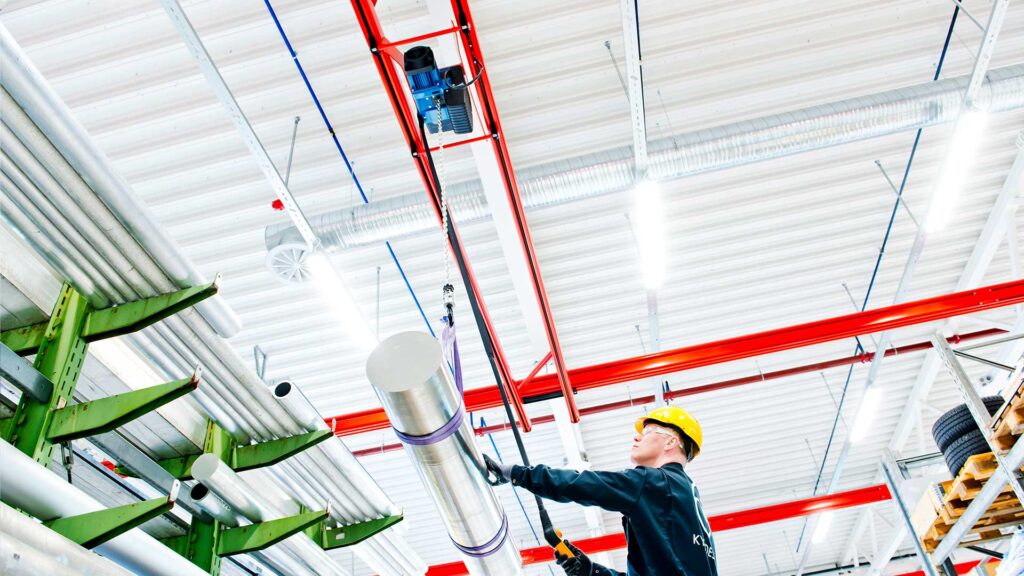A manufacturing facility requires the use of heavy machinery and equipment for production. To lift or move heavy loads, electric chain hoists are often used. When lifting long, unbalanced, or awkward loads, it is often necessary to use multiple lifting points. Synchronizing 2 or more chain hoists allows for safe and efficient movement of the load, which may otherwise be difficult to control and position with a single hook. In this post, we will talk about simultaneous independent lifting and mechanically synchronous hoist configurations, so you know what is available for your operations.
Benefits of Chain Hoists and Synchronized Lifting
Synchronized chain hoists are a great option for lifting awkward-sized loads and long bars of materials. There are many benefits to using synchronized hoists in manufacturing environments. First, synchronized hoists allows for lifting two loads at the same time or using two hooks to lift one load or component. The ability to do this can make your operations more efficient.

When you require lifting in your manufacturing operations, chain hoists are versatile and easy to operate. They can make lifting operations more ergonomic for your workforce by minimizing or eliminating manual lifting. Chain hoists can be equipped with safety features like overload protection and limit switches. If the chain hoist is matched to your lifting requirements like capacity and lifts per hour, they are durable and can withstand heavy use.
Synchronized Lifting Makes Operations Safer and More Efficient
Synchronized hoists can be supplied in two configurations. One configuration is two hoists with an electrical control system that allows them to operate both simultaneously and independently. The other configuration uses mechanical synchronization with one hoist motor driving 2 or more hooks.
Common applications of synchronized lifting with chain hoists in manufacturing facilities are for the movement of large, bulky, or awkward components and equipment. Synchronized lifting with chain hoists allows for greater control and precision when lifting or moving heavy loads. By using multiple hooks, the load can be lifted and moved with more precision and with less risk of the load rotating, swinging, or tipping.
Vehicle manufacturers may use multiple hooks to move a large component during the assembly process in an assembly line. Other manufacturing environments may use synchronized hooks to transport long bars of raw material safely and efficiently.

Specialized operations can use synchronized chain hoists to perform specific tasks. Multiple leadoffs can be used in operations where a unit that completes a task needs to be lifted. For example, the application shown uses 4 synchronized hooks to perform the weighing and packaging of nuts in a factory.
Fixed Mechanical Synchronized Lifting

One way to use multiple hooks for lifting is in a configuration using a fixed configuration with mechanical synchronized lifting. What this means is the hooks are mounted in fixed points and the hooks are controlled by one hoist motor, sometimes connected mechanically with a drive shaft. A fixed configuration allows the hooks to be synchronized 100% of the time in the fixed locations.
With the hooks in fixed locations, the hoists cannot be used singularly like in simultaneous and independent (S/I) lifting applications. This assures they stay 100% synchronous for the lifting operation performed.
Flexibility with Simultaneous and Independent Lifting
Flexibility is a critical factor in manufacturing environments. While synchronized lifting with chain hoists is useful for lifting long, unbalanced, or awkward loads, you may be able to configure your synchronized hoists to be used solo. Simultaneous and independent lifting (S/I) allows for lifting lighter loads or performance of other tasks in the same areas as synchronized lifting. Having the flexibility to use them solo or in synchronous use gives your operations the ultimate flexibility.

Chain hoists are relatively easy to use and make lifting ergonomic for your workforce. Once the load is safely attached to the hook or other attachment, the load can be lifted or lowered. Chain hoists can even eliminate manual lifting in your manufacturing operations.
Working With a Knowledgeable Expert
When researching and considering lifting equipment for your manufacturing operations, be sure to work with an expert dealer or manufacturer partner to ensure the equipment will meet your requirements. Synchronized lifting configurations should meet the size and highest capacity loads being lifted. This is especially necessary when the hoist will be used in a synchronous configuration and solo hoist.
Be aware of any special environmental or duty requirements you may have. Environments where there is high heat or dust, use outdoors, or in a cleanroom environment all have different requirements. The hoist should also be matched to the environment it will be operating within.
Synchronized lifting with chain hoists can bring numerous benefits to your manufacturing facility. These hoist configurations allow awkward sized or long loads to be effectively and safely lifted. You may also have the opportunity to use synchronous hoists as solo hoist when other types of lifting are necessary. Add flexibility, efficiency, and safety for your workforce and your operations with synchronized chain hoist lifting.
Learn more about the Demag LDC-D Double Chain Hoist and LDC-Q Four Chain Hoist synchronized lifting solutions!
